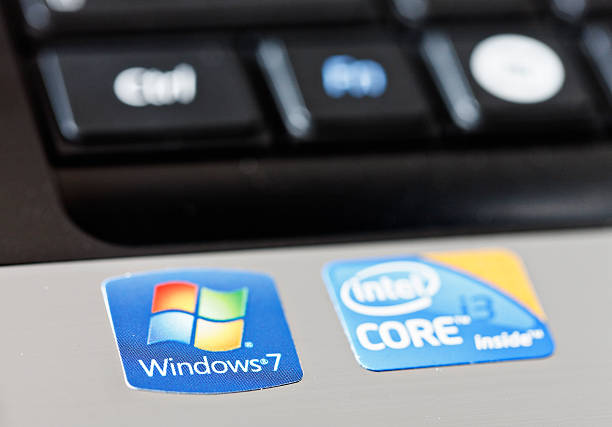Introduction
Active Directory (AD) is a crucial component of Microsoft’s ecosystem, serving as a centralized repository for managing users, groups, and resources in a Windows-based network. Within Active Directory, various attributes play essential roles in defining user and object properties. One such attribute is “msExchRemoteRecipientType,” which is especially relevant in environments using Microsoft Exchange for email services. In this article, we’ll explore the msExchRemoteRecipientType attribute, its significance, and how it impacts email management in an organization.
What is the msExchRemoteRecipientType attribute?
The msExchRemoteRecipientType attribute is a property found in Active Directory that relates to the Microsoft Exchange Server. This attribute stores information about the recipient type of a mailbox or email-enabled object. In essence, it helps identify the purpose and characteristics of the mailbox or object in the context of exchange-related operations.
The msExchRemoteRecipientType attribute is particularly valuable in hybrid Exchange environments, where organizations use a combination of on-premises and cloud-based Exchange services. Understanding this attribute is crucial for efficient email management, especially when dealing with cross-platform email infrastructure.
The Significance of msExchRemoteRecipientType
1. Mailbox Management: The msExchRemoteRecipientType attribute is essential for identifying different types of mailboxes or email-enabled objects within an organization. This is crucial for mailbox provisioning, de-provisioning, and other administrative tasks. For example, it helps determine whether a mailbox is associated with a user account, a shared mailbox, a resource mailbox, or a contact.
2. Hybrid Exchange Environments: In hybrid Exchange deployments, organizations have mailboxes hosted both on-premises and in Microsoft 365 (formerly known as Office 365). The msExchRemoteRecipientType attribute helps distinguish between on-premises and cloud-based mailboxes, ensuring that email is routed correctly and that policies are applied as intended.
3. Recipient Policies: Organizations often have different policies and settings for various types of mailboxes. The msExchRemoteRecipientType attribute aids in the enforcement of these policies, ensuring that each mailbox type adheres to the appropriate configuration settings, such as retention policies, access controls, and email forwarding rules.
4. Migration and Coexistence: When migrating mailboxes between on-premises and cloud environments or when maintaining both environments simultaneously (known as coexistence), the msExchRemoteRecipientType attribute plays a critical role. It helps determine the source and destination of email traffic, ensuring seamless communication between mailboxes regardless of their location.
5. Reporting and Auditing: Tracking and auditing email-related activities within an organization is essential for security and compliance purposes. The msExchRemoteRecipientType attribute is used in reporting and auditing tools to categorize and analyze mailbox activities, providing insights into how different mailbox types are being used.
Types of msExchRemoteRecipientType Values

The msExchRemoteRecipientType attribute uses numerical values to represent different recipient types. While these values may not be immediately intuitive, they serve as a standardized way to identify and manage various mailbox and object types. Here are some common msExchRemoteRecipientType values and their meanings:
1. User Mailbox: This value indicates a standard user mailbox associated with a user account. It is the most common type of mailbox used by individual users for sending and receiving emails.
2. Shared emailbox :Shared mailboxes are typically used for group communication. They do not have a direct user account associated with them and are often used for customer support, help desks, or departmental email addresses.
3. Resource Mailbox: Resource mailboxes represent meeting rooms, equipment, or other resources that can be scheduled in calendars. They help manage resource availability and bookings efficiently.
4. Mail-Enabled User: A mail-enabled user is a user account that can receive emails but does not have a mailbox associated with it. This type is often used for forwarding purposes or as a contact for external communication.
5. Mail-Enabled Contact: Mail-enabled contacts represent external recipients, such as vendors, partners, or customers. They allow internal users to send emails to external entities without creating user accounts for them.
6. Mail-Enabled Universal Distribution Group: These are distribution groups that can receive emails. When an email is sent to such a group, it is distributed to all the group members.
These are just a few examples of msExchRemoteRecipientType values. Each value corresponds to a specific mailbox or object type, helping administrators and Exchange systems understand the nature and purpose of the associated object.
How to View and Modify msExchRemoteRecipientType
While understanding the msExchRemoteRecipientType attribute is essential, it’s equally important to know how to access and modify it when necessary. Here’s how you can view and modify the msExchRemoteRecipientType attribute: Viewing msExchRemoteRecipientType
1. Using Active Directory Users and Computers
Open ADUC on a Windows server or computer with the Active Directory Administrative Tools installed. Navigate to the user or object whose msExchRemoteRecipientType you want to view. Right-click on the object, select “Properties,” and go to the “Attribute Editor” tab. Scroll down or search for “msExchRemoteRecipientType” to view its value.
2. Using PowerShell
You can use PowerShell to query the msExchRemoteRecipientType attribute. For example, the following command retrieves the msExchRemoteRecipientType value for a user named “JohnDoe”:
Modifying msExchRemoteRecipientType
Modifying the msExchRemoteRecipientType attribute should be done with caution, as incorrect changes can impact email functionality. Only make changes when you fully understand the implications and have a clear reason to do so.
1. Using Active Directory Users and computers
To modify the msExchRemoteRecipientType attribute using ADUC, follow the same steps as viewing, but instead of merely viewing the attribute, you can edit its value.
2. Using PowerShell
To modify the msExchRemoteRecipientType attribute using PowerShell, you can use the `Set-ADUser` cmdlet. For example, to set the msExch Remote Recipient to “4” for a user named “support team,” you can use the following command:
Best Practices and Considerations
When working with the msExchRemoteRecipientType attribute, consider the following best practices and considerations to ensure efficient email management and system stability:
1. Documentation: Maintain clear documentation of the msExchRemoteRecipientType values used in your organization. This documentation should include the meaning of each value and the associated mailbox or object types.
2. Backup and Restore: Before making any significant changes to the msExchRemoteRecipientType attribute, ensure you have reliable backups of your Active Directory and Exchange environments. This is crucial for recovering from unintended consequences.
3. Testing: Always test changes in a non-production environment before implementing them in your production environment. This helps identify potential issues or conflicts.
4. Access Control: Restrict access to the msExchRemoteRecipientType attribute to authorized personnel only. Unauthorized changes can lead to disruptions in email services.
5. Regular Auditing: Implement regular auditing and monitoring of changes to the msExchRemoteRecipientType attribute to detect and respond to any unauthorized modifications.
6. Compliance: Ensure that any changes made to the msExchRemoteRecipientType attribute comply with your organization’s policies and regulatory requirements, especially if it involves external recipients or sensitive data.
Conclusion
The msExchRemoteRecipientType attribute is a fundamental component of Active Directory, especially in organizations using Microsoft Exchange for email services. Understanding its role and significance is crucial for effective email management, particularly in hybrid Exchange environments. By categorizing mailboxes and objects into different recipient types, organizations can streamline email operations, enforce policies, and maintain a secure and compliant email infrastructure. However, it’s essential to approach modifications to this attribute with caution, following best practices and considering the potential impact on your email environment. With the right knowledge and practices in place, the msExchRemoteRecipient attribute becomes a valuable tool for managing email resources effectively.
